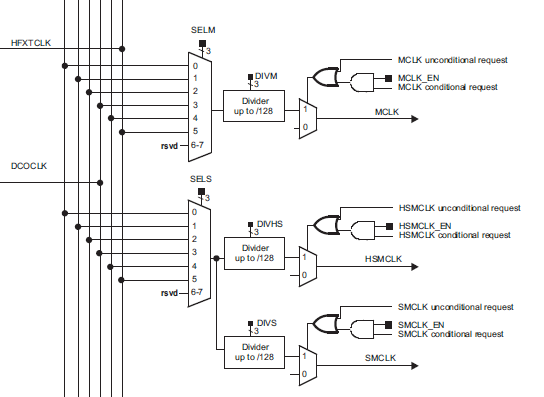Hi,
I have practical difficulties to rise SMCKL at 24MHz DCO on MSP432 rev.C to the ratio MCKL/SMCLK = 1:1. I've changed LDO to VCore1 and cleared all dividers. No result: SMCLK = 12 MHz, MCLK=24MHz.
// Switches LDO to VCORE1
while((PCM->CTL1 & PCM_CTL1_PMR_BUSY));
PCM->CTL0 = PCM_CTL0_KEY_VAL | PCM_CTL0_AMR_1;
while((PCM->CTL1 & PCM_CTL1_PMR_BUSY));
CS->KEY = CS_KEY_VAL;
CS->CTL0 = CS_CTL0_DCORSEL_4; // Set DCO to 24MHz
CS->CTL1 = (CS->CTL1 & ~(CS_CTL1_SELM_MASK | CS_CTL1_DIVM_MASK | CS_CTL1_DIVHS_MASK | CS_CTL1_DIVS_MASK | CS_CTL1_SELS_MASK)) | CS_CTL1_SELA__REFOCLK | CS_CTL1_SELS__DCOCLK | CS_CTL1_SELM__DCOCLK;
CS->KEY = 0;
Any ideas why or how to solve it?
Alexey


